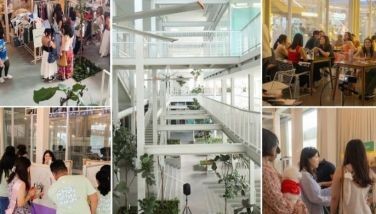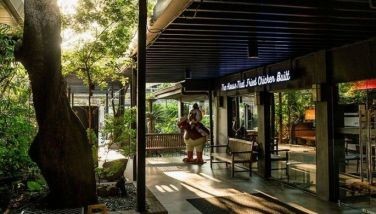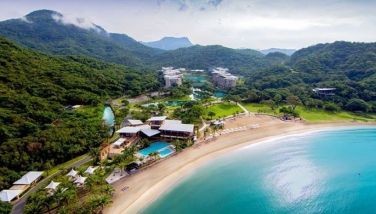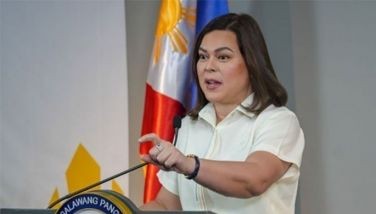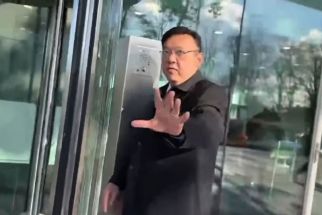WB: Investments in RP extraordinarily low

March 9, 2007 | 12:00am
CEBU – The Philippine government must focus on raising investments and ensuring that the benefits of fiscal reform programs would lead to poverty reduction, World Bank country representative Joachim Von Amsberg said yesterday at the opening of the two-day Philippine Development Forum (PDF) at the Marco Polo Hotel here.
Von Amsberg noted that despite some of the fiscal improvements and reasonable growth rates, the investment rate in the country remains low at under 15 percent.
"This is extraordinarily low and raises the question of sustainability of growth. There are questions why growth has not created more employment and more income, and therefore, more rapid poverty reduction," he said in his opening speech.
The World Bank executive urges the PDF "to translate financial improvements into real investments, jobs, incomes and poverty reduction."
He admitted though that the Philippines is in a different situation than it was two years ago. Inflation, he said, has declined, debt is decreasing and growth has been reasonably stable.
"This year, we are meeting in the "context of a more positive macroeconomic and fiscal environment. However, the full picture is more complex, and of course there are challenges that lie ahead," he said.
The government facilitates policy dialogue among sectors involved in forming the country’s development agenda through the PDF, which evolved from consultative meetings held every 18 months by representatives from the government and international development partners.
The last PDF held in Tagaytay City in March last year drew almost 300 participants. This year’s event, with the theme "Achieving Broad-Based Growth through Sustained Reforms and Higher Investments," was held in Cebu to underscore the economic boom in the south.
In his message to the advocates of Philippine development present at the forum, Finance Secretary Margarito Teves affirmed Von Amsberg’s observation about the favorable economic climate in the country.
He said interest rates slid to their lowest as average inflation fell to a two-year low of 6.2 percent, real gross domestic product (GDP) grew by 5.4 percent and real gross national product (GNP) by 6.2 percent last year.
"This is the first time since the 1970s that the economy has grown at these levels for three consecutive years," Teves noted in his speech read by Trade and Industry Secretary Peter Favila.
The government, he said, is committed to sustaining fiscal and economic reforms that will help bring about broad-based growth. In fact, it will present to its development partners 10 priority infrastructure projects for possible funding or assistance.
The 10 projects, worth P80.681 billion, mostly cover road and rail undertakings for Luzon and Metro Manila and are in the advanced stages of discussions or have gone through the Investment Coordination Committee (ICC).
The 10 projects include the Bicol Emergency Power Restoration Project (P1.115 billion), Angat Water Utilization Improvement Project, Phase 2 (P3.575 billion), Quirino Highway Project (P1.621 billion), Palawan South Road Project (P3.130 billion), North Luzon Expressway Extension Project (P19.350 billion), LRT Line 6 Project, which proposes a southward extension of the LRT Line 1 to Cavite (P35.474 billion), Northrail-Southrail Linkage Project (P4.520 billion), Panguil Bay Bridge Project (P2.670 billion), LRT Line 1 North Extension Project, which closes the MRT-LRT loop (P6.206 billion), and the North Luzon East Expressway Project (P3.013 billion).
Von Amsberg noted that despite some of the fiscal improvements and reasonable growth rates, the investment rate in the country remains low at under 15 percent.
"This is extraordinarily low and raises the question of sustainability of growth. There are questions why growth has not created more employment and more income, and therefore, more rapid poverty reduction," he said in his opening speech.
The World Bank executive urges the PDF "to translate financial improvements into real investments, jobs, incomes and poverty reduction."
He admitted though that the Philippines is in a different situation than it was two years ago. Inflation, he said, has declined, debt is decreasing and growth has been reasonably stable.
"This year, we are meeting in the "context of a more positive macroeconomic and fiscal environment. However, the full picture is more complex, and of course there are challenges that lie ahead," he said.
The government facilitates policy dialogue among sectors involved in forming the country’s development agenda through the PDF, which evolved from consultative meetings held every 18 months by representatives from the government and international development partners.
The last PDF held in Tagaytay City in March last year drew almost 300 participants. This year’s event, with the theme "Achieving Broad-Based Growth through Sustained Reforms and Higher Investments," was held in Cebu to underscore the economic boom in the south.
In his message to the advocates of Philippine development present at the forum, Finance Secretary Margarito Teves affirmed Von Amsberg’s observation about the favorable economic climate in the country.
He said interest rates slid to their lowest as average inflation fell to a two-year low of 6.2 percent, real gross domestic product (GDP) grew by 5.4 percent and real gross national product (GNP) by 6.2 percent last year.
"This is the first time since the 1970s that the economy has grown at these levels for three consecutive years," Teves noted in his speech read by Trade and Industry Secretary Peter Favila.
The government, he said, is committed to sustaining fiscal and economic reforms that will help bring about broad-based growth. In fact, it will present to its development partners 10 priority infrastructure projects for possible funding or assistance.
The 10 projects, worth P80.681 billion, mostly cover road and rail undertakings for Luzon and Metro Manila and are in the advanced stages of discussions or have gone through the Investment Coordination Committee (ICC).
The 10 projects include the Bicol Emergency Power Restoration Project (P1.115 billion), Angat Water Utilization Improvement Project, Phase 2 (P3.575 billion), Quirino Highway Project (P1.621 billion), Palawan South Road Project (P3.130 billion), North Luzon Expressway Extension Project (P19.350 billion), LRT Line 6 Project, which proposes a southward extension of the LRT Line 1 to Cavite (P35.474 billion), Northrail-Southrail Linkage Project (P4.520 billion), Panguil Bay Bridge Project (P2.670 billion), LRT Line 1 North Extension Project, which closes the MRT-LRT loop (P6.206 billion), and the North Luzon East Expressway Project (P3.013 billion).
BrandSpace Articles
<
>
- Latest
- Trending
Trending
Latest
Trending
Latest
Recommended











